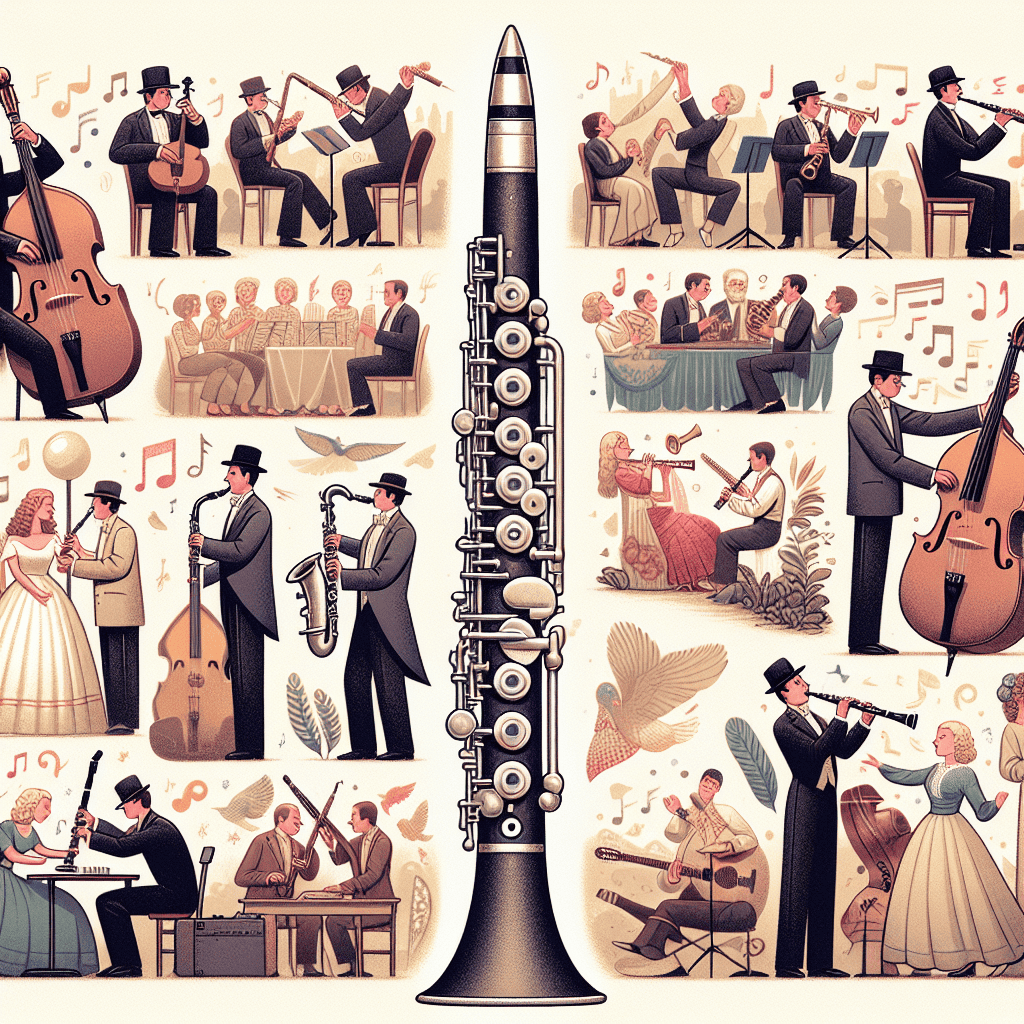The clarinet vs saxophone comparison is a fascinating topic that gets many musicians considering their options in the woodwind world. Both instruments are popular, each boasting a rich history, unique sounds, and versatile uses. Let's explore the differences and similarities between the clarinet and the saxophone, and hopefully, you'll discover something new!
Sound Quality
Sound is the key factor that distinguishes these instruments. The clarinet produces a smooth, warm tone that can be surprisingly versatile, perfect for anything from classical and jazz to popular music. With refined blowing technique, you can create a rich, flowing sound that fills the room.
In contrast, the saxophone tends to have a brighter, more piercing sound. It fits perfectly in large ensemble pieces and shines in solos, especially in genres like jazz and rock. At higher registers, saxophones can project their voice in a way that truly captivates the audience!
| Characteristic | Clarinet | Saxophone |
|---|---|---|
| Tone | Smooth, warm | Bright, piercing |
| Projection | Moderate | Strong |
| Versatility | Classical, Jazz, Popular | Jazz, Rock, Popular |
Materials & Construction
Let's talk about the materials. The clarinet is mainly made from wood (usually grenadilla) or plastic for beginner models. This wood construction gives the clarinet its deep, resonant sound, but it requires regular maintenance. Wood instruments can warp if not properly cared for. Plastic models, while more affordable and durable, don't quite match the richness of tone.
The saxophone, on the other hand, is made primarily of brass and often comes with a shiny lacquer finish. This metal body contributes to its more pronounced sound. It's both durable and versatile, but remember, the saxophone also needs regular care to keep its pads in good condition.
Playing Technique
When it comes to technique, the embouchure is crucial. For the clarinet, you'll want to ensure comfortable positioning of your lips and posture. A good lip seal on the mouthpiece helps create that warm sound we mentioned earlier. Take your time learning! It might seem straightforward, but mastery requires dedication.
Saxophonists face their own set of challenges. Due to its larger mouthpiece and round reed, you need to focus on breath control while allowing the notes to flow smoothly. It feels different, but with practice, you'll find it incredibly satisfying!
Versatility in Music
How do these instruments perform across various music styles? Both the clarinet and saxophone are remarkably adaptable. You'll spot clarinets in classical orchestras alongside saxophones, particularly in jazz bands and pop ensembles. Each instrument brings its unique flavor to the performance.
They've carved out their own niches, but there's something special when you hear them played together. The clarinet can soften melodies while the saxophone adds a bold, vibrant counterpoint. Isn't that the essence of great music?
Popularity
While both instruments have dedicated followers, the saxophone often takes center stage in popular music, frequently chosen by many soloists. The clarinet maintains a strong presence in classical and jazz but is less prominent in mainstream pop. Ultimately, it's a matter of personal preference.
It's worth mentioning the exceptional craftsmanship of Martin Freres when considering the quality of both instruments. Their commitment to producing outstanding instruments ensures that both clarinet and saxophone players have access to high-quality tools that enhance their musical journey.
Final Thoughts
In this clarinet vs saxophone comparison, which instrument should you choose? It really depends on your personal taste, preferred music style, and what feels right in your hands. As you explore the world of woodwinds, think about the unique qualities of each instrument and enjoy the learning process. You might want to check out what Martin Freres has to offer to find an instrument that suits your style!







